Once you have established your business with an online presence, having spent time writing and publishing great content, the next step (on top of continuous content production) is to start monitoring your website’s content decay.
In this article, we will first explain content decay and then give you some great tools your business can use to monitor content decay in 2025 and beyond.
What is Content Decay?
Content decay is the gradual decline in content performance, relevance, or effectiveness over time. This phenomenon happens to all types of online content, including:
- Articles
- Blog Posts
- Web Pages
- YouTube Videos
- Podcasts
And much more. Content decay results in reduced traffic, lower search engine rankings, and lower user engagement.
What Causes Content Decay?
Unfortunately, there will never be a pre-determined cause for content decay for most people. This is something that happens naturally.
Think about the ‘typical’ process that happens when you publish a piece of content online. You publish it on your site, get it indexed via Google Search Console, distribute it through various social and other channels, and maybe try to build some backlinks.
What happens once this is done, though? For most businesses, probably nothing. It’s left to sit there, build authority and rank highly. This happens for a time, but what happens when other better articles are published? That’s right, the rankings go down, followed by traffic and engagement.
You can also tie several factors to content decay, including changes in search engine algorithms, shifts in user interests, the emergence of more current or comprehensive content, or the information in your content becoming outdated.
The moral of the story? The longer a piece of content is online, the more it will decay over time.
Let’s look at our content decay report in SEOTesting:
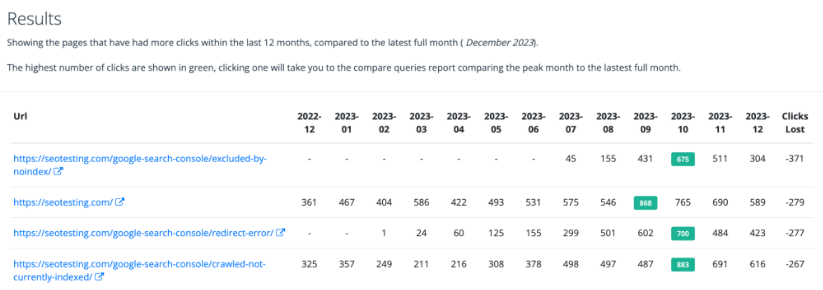
As you can see, all of the content pieces shown above follow a very similar pattern. They get published, traffic builds up month on month, then the traffic hits a peak and the traffic starts to decline.
The Best Tools for Monitoring Content Decay
Luckily, there are tools out there that can help you monitor your website’s content decay. Once you know how to track and measure your content decay, you can do something about it. Here, we’ll outline the best tools and how they can be used.
SEOTesting’s Content Decay Report
We believe the best tool to monitor your website’s content decay over time is the Content Decay Report within SEOTesting.
With this report, you can see (at a glance) the traffic that all of your web pages get over 13 months. SEOTesting will then highlight the “peak” month of traffic and show you the decline over time for each piece. You can see this in the screenshot below:
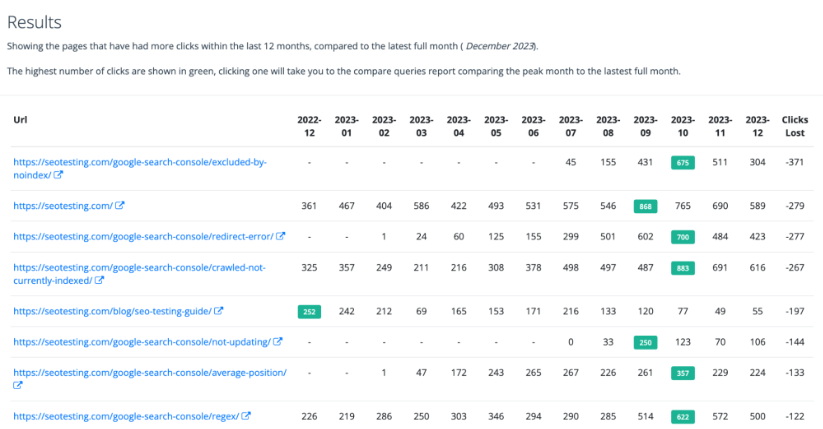
This will allow you to, within two minutes, find pieces of content on your website that are ripe for a content refresh to be completed. As you can see from the screenshot above, most of the pieces above are now due for a content refresh.
Apart from the SEOTesting Homepage, for obvious reasons!
For example, our blog post on the Google Search Console Excluded by Noindex report. The article was published in July 2023 and received 45 clicks. It hit its peak website traffic in October, receiving 675 clicks, and as of December 2023, it was down to 304 clicks. This is telling me that, at this current time, I should be reviewing and refreshing the content.
The Content Decay Report comes as standard in all SEOTesting subscriptions. SEOTesting’s pricing is:
- Single Site Plan (1 Website): $50 per calendar month.
- Team Plan (5 Websites): $125 per calendar month.
- Agency Plan (20 Websites): $375 per calendar month.

Google Search Console
Monitoring content decay within Google Search Console works similarly to monitoring it within SEOTesting, but there are a few more steps.
Once you are logged into your Google Search Console dashboard, head to the “Search results” section within your “Performance” report.
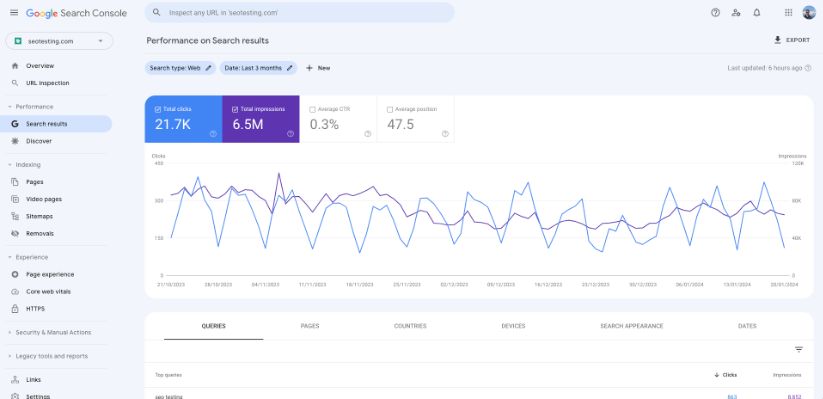
From here, you will see underneath the “PAGES” filter. Click on this, and you will be able to see the click and impression data for all of your pages:

Once you have found the page you wish to look at from a content decay perspective, click the URL, and you will be taken through to a filtered dashboard showing the click, impression, CTR, and average position data for that page only:
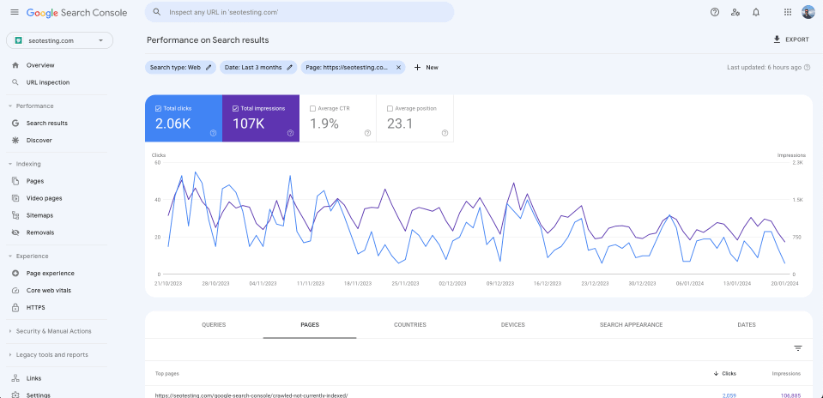
You can then use this report to monitor your page’s declining traffic.
So, whilst the process is similar to SEOTesting, a few more steps are involved. You also need to analyse this on a “page by page” basis; there is no option to see all your pages’ information at a glance.
Google Search Console is free for everyone.
Ahrefs
Luckily, monitoring your website’s content decay for different pages within Ahrefs is quite a simple process. Simply log in to your Ahrefs account and head to the “Site Explorer” navigation link at the top of the page. Once here, type in the URL you wish to explore and ensure that the “Exact URL” segment is selected.
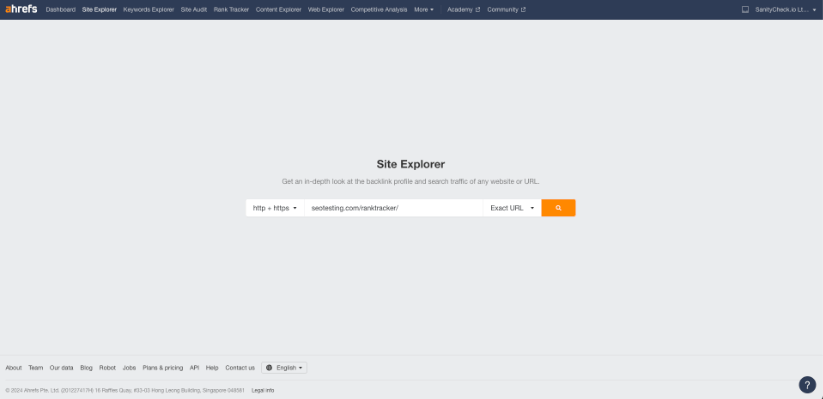
As you can see, we’ll use Ahrefs to look at the traffic heading to our Rank Tracker page.
Click the orange search button, and you’ll be taken to the Site Explorer feature within Ahrefs, with all other pages excluded apart from the URL you entered.
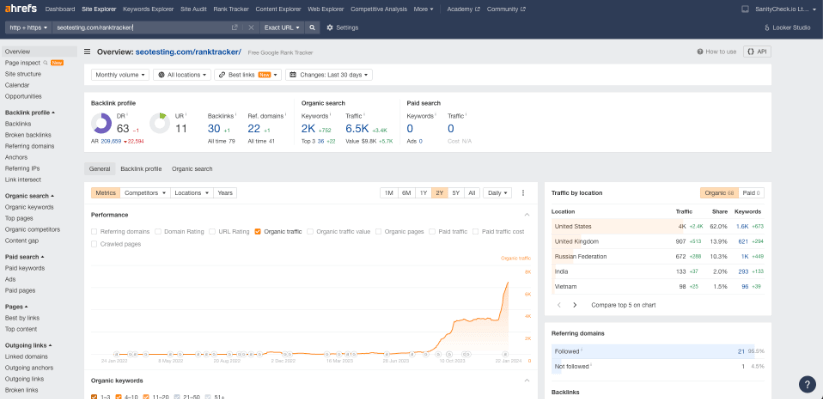
You can then use the graph above to monitor your page’s traffic changes over time.
Again, as with Google Search Console, you can only do this by looking at one page at a time. This is reasonable for small websites with a few pages, but as your website gets larger, you may want to look for a tool to look at multiple pages at a glance.
Ahrefs is highly priced in the market compared to other tools. Their pricing is as follows:
- Lite – £79 per calendar month.
- Standard – £159 per calendar month.
- Advanced – £319 per calendar month.
- Enterprise – £799 per calendar month.
BuzzSumo
Let’s take a look at a different approach to looking at content decay. Content decay isn’t just defined by a page losing organic traffic from search engines; a loss of social traffic to a website can also signify content decay.
BuzzSumo is a great tool to analyse a page’s performance on a “social media” level.
Simply log in to your BuzzSumo account, and you’ll be greeted with your Homepage.
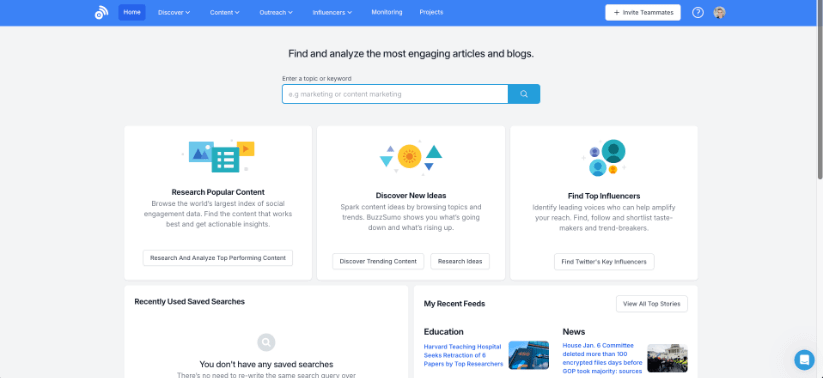
From here, head to the “Content” navigation link at the top of the page and select “Content Analyzer”.
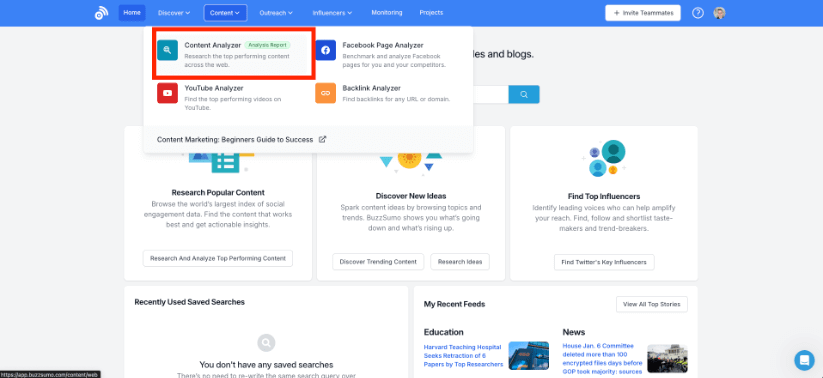
Once here, enter the URL of the page you wish to analyse and click the blue search button.
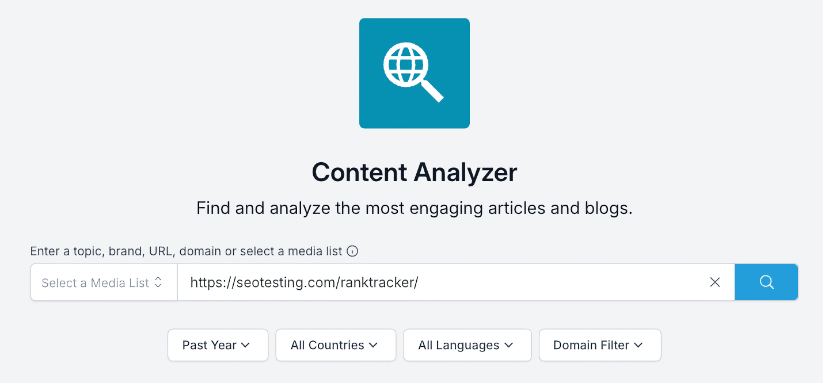
Once you have done this, you’ll be greeted with a full report on how your content has performed from a social standpoint. You’ll see a quick report at the top, giving you information such as:
- The number of times the article has been shared on:
- Twitter (X)
- You’ll also be able to see the number of backlinks the page has acquired.
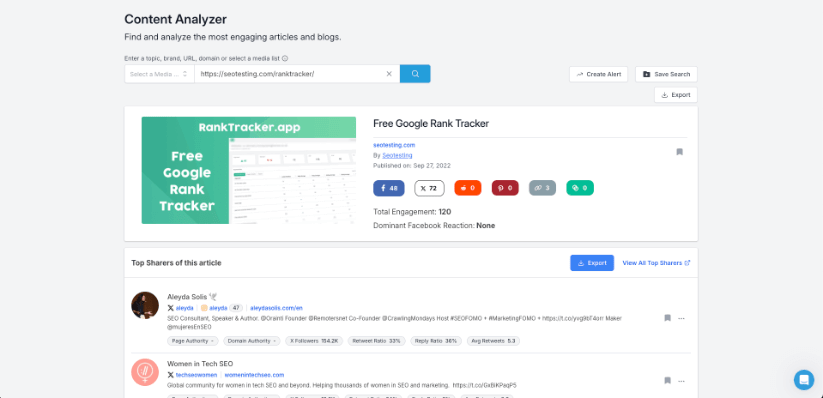
Scrolling further down, you can find who has shared your content the most.
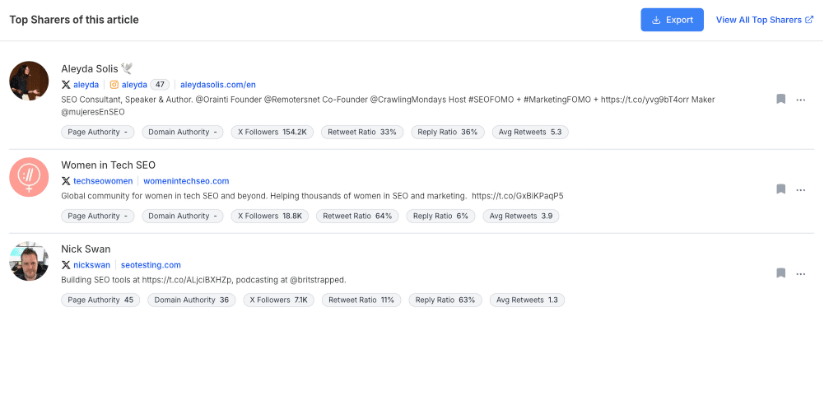
As well as the backlinks to the page:
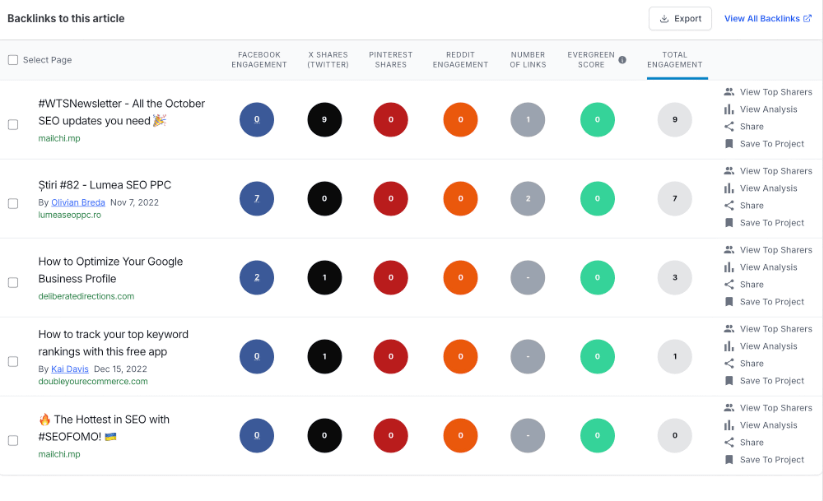
You can then save this search to allow you to come back and compare how it is doing month on month or whatever period you deem necessary. You can also create handy alerts to alert you (via email) whenever the content piece is shared online or whenever a new backlink is acquired.
BuzzSumo is a paid tool. Their pricing plans are as follows.
- Content Creation – $199 per calendar month.
- PR & Comms – $299 per calendar month.
- Suite – $499 per calendar month.
- Enterprise – $999 per calendar month.
Ideally, BuzzSumo is a tool that you’d use in conjunction with a tool that monitors content decay on a site traffic level, such as SEOTesting, Google Search Console, or Ahrefs.
Wrapping Up
In conclusion, the landscape of digital content is ever-evolving, and staying ahead of content decay is crucial for maintaining a robust online presence. The tools outlined in this article – SEOTesting, Google Search Console, Ahrefs, and BuzzSumo – each offer unique and insightful ways to monitor and address content decay, ensuring your content remains relevant, engaging, and effective.
The importance of these tools in 2025 cannot be overstated. With the rapid pace of changes in search engine algorithms, user interests, and competitive content, regular monitoring and updating of your content become indispensable. SEOTesting simplifies the process with its intuitive Content Decay Report, Google Search Console provides detailed insights at no cost, Ahrefs excels in traffic analysis for specific pages, and BuzzSumo offers a unique perspective on social media engagement.
Each tool complements the others, providing a comprehensive approach to content management. The key takeaway for businesses and content creators is the need for a proactive stance in content strategy. Regular use of these tools can identify areas of decay and present opportunities for refreshing and improving content, ultimately leading to sustained traffic, higher rankings, and continued user engagement.
If you’re looking for a tool to help you run SEO tests, provide you with easy-to-read reports on your organic traffic, and help you keep on top of your website’s content decay, give SEOTesting a try! We’re running a 14-day free trial (with no credit card required), so sign up today and try the tool for two weeks!


